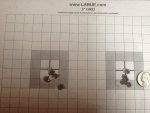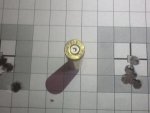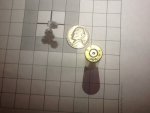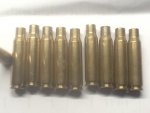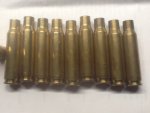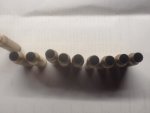I loaded 20 rds of .308 from once fired fgmm brass. The brass measured a thou over zero on the rcbs precision mic. I bumped the shoulder back 2 thousandths with the rcbs fl sizing die. Trimmed the neck back to 2.010 oal. Deburred.
44.5 gr imr 4064
seated the 168 Sierra matchking at .203 with the precision mic. Fgmm is .194. Both are way off the lands.
cci primers- #200
Everything was going great with accuracy. On 7 out of the 10 rds the bolt lift at the top was a very hard click and then it ejected fine. After bumping the twice fired case back .002 it chambered fine. I would still get the hard click when I would rechamber the fired reloaded brass case. The primers seem to look very flat but as you can see in the pic so did the once fired fgmm. I'm not used to posting topics so please bare with me with the setup and pics. Any help would be appreciated- thanks
Edit: Accurate Ordinance rifle
Rem 700 action trued c prefix
Bartlein barrel
44.5 gr imr 4064
seated the 168 Sierra matchking at .203 with the precision mic. Fgmm is .194. Both are way off the lands.
cci primers- #200
Everything was going great with accuracy. On 7 out of the 10 rds the bolt lift at the top was a very hard click and then it ejected fine. After bumping the twice fired case back .002 it chambered fine. I would still get the hard click when I would rechamber the fired reloaded brass case. The primers seem to look very flat but as you can see in the pic so did the once fired fgmm. I'm not used to posting topics so please bare with me with the setup and pics. Any help would be appreciated- thanks
Edit: Accurate Ordinance rifle
Rem 700 action trued c prefix
Bartlein barrel
Attachments
Last edited:

